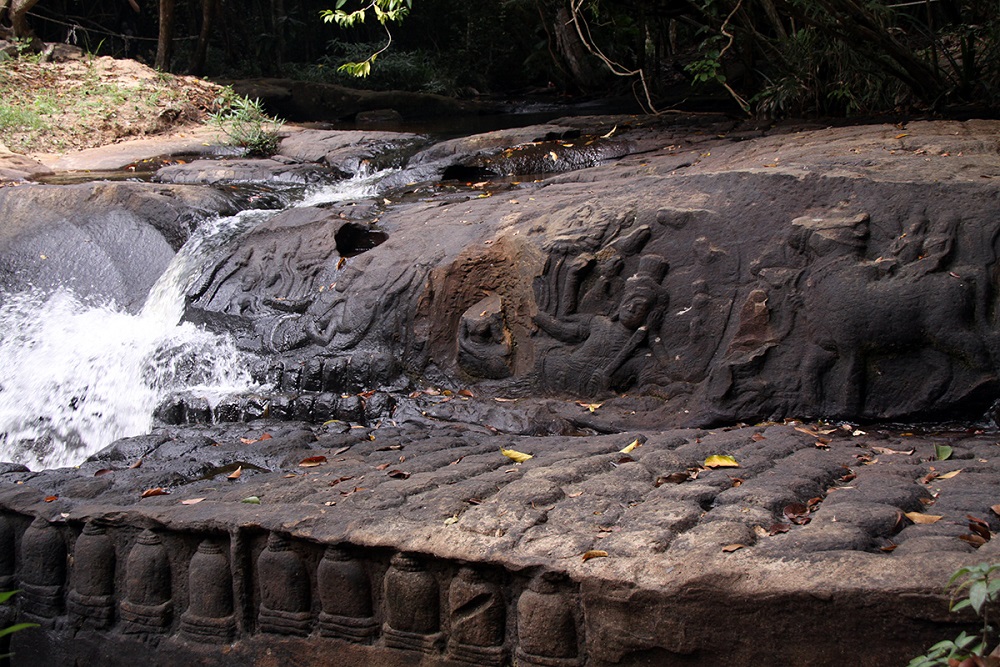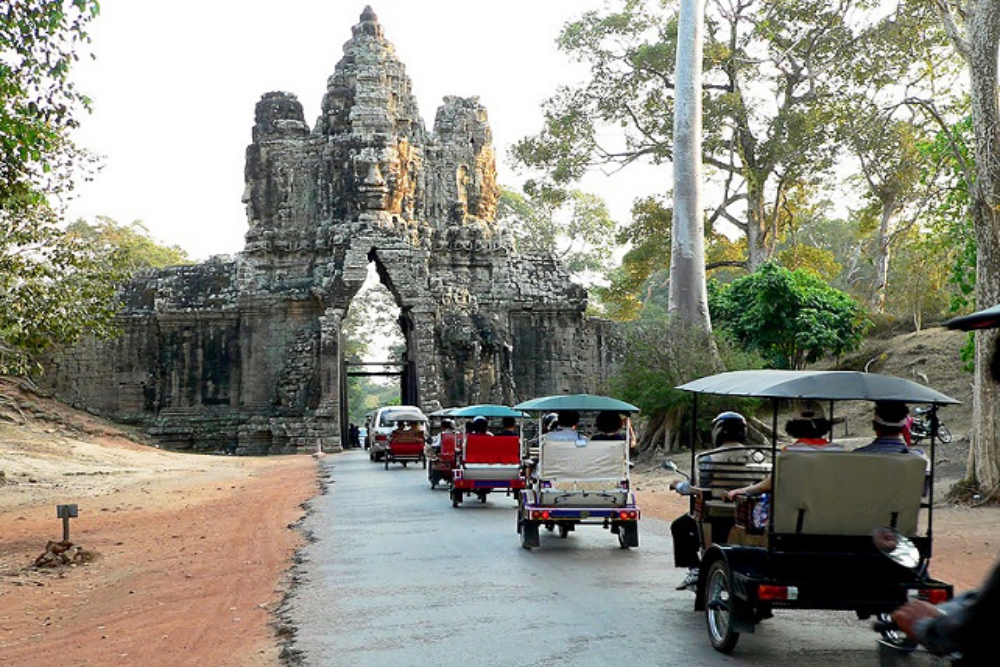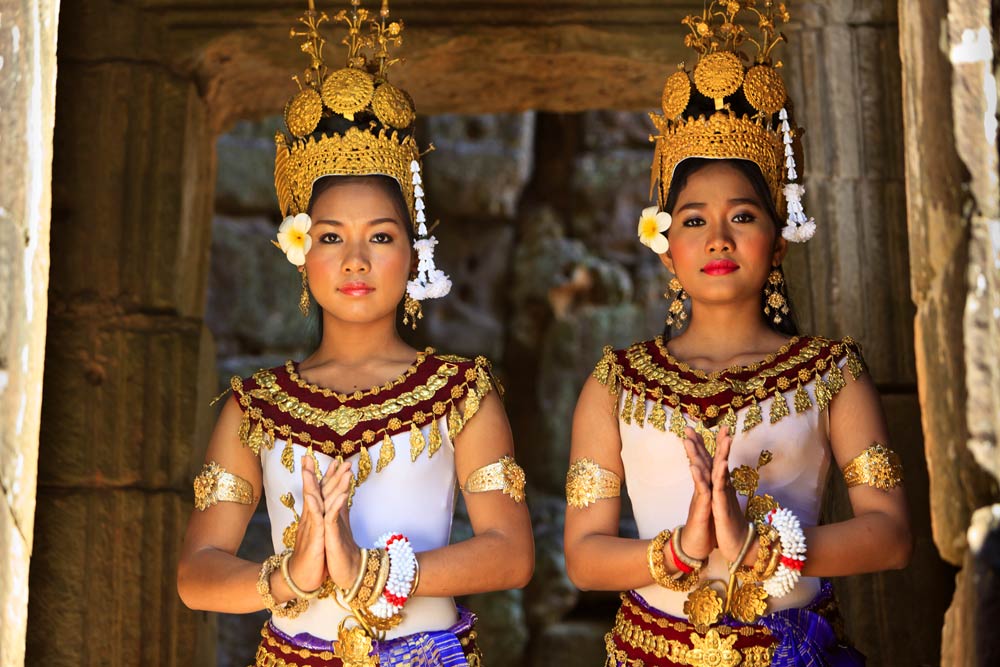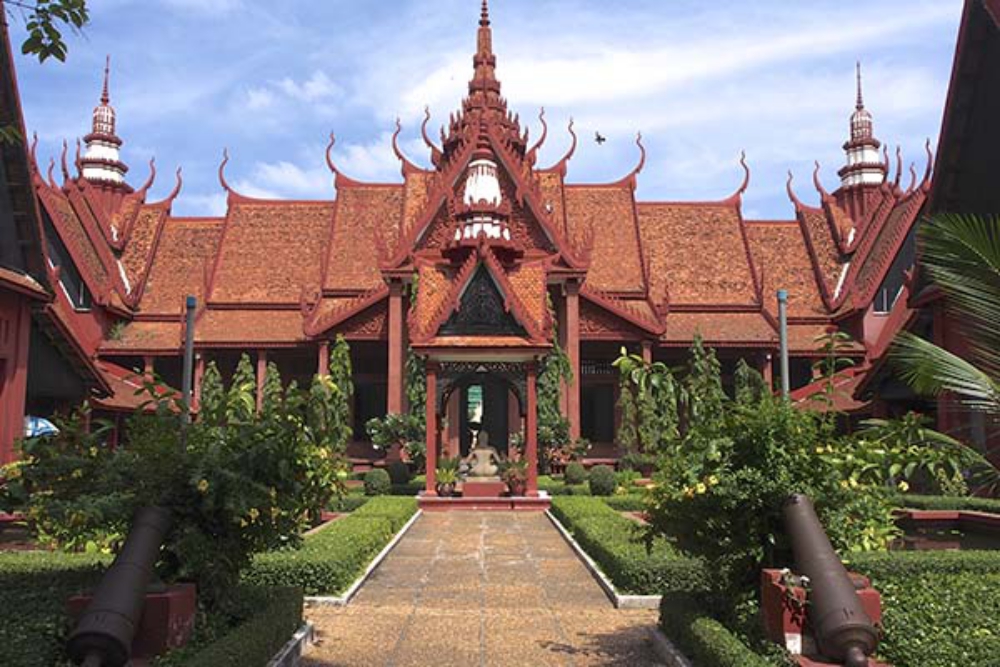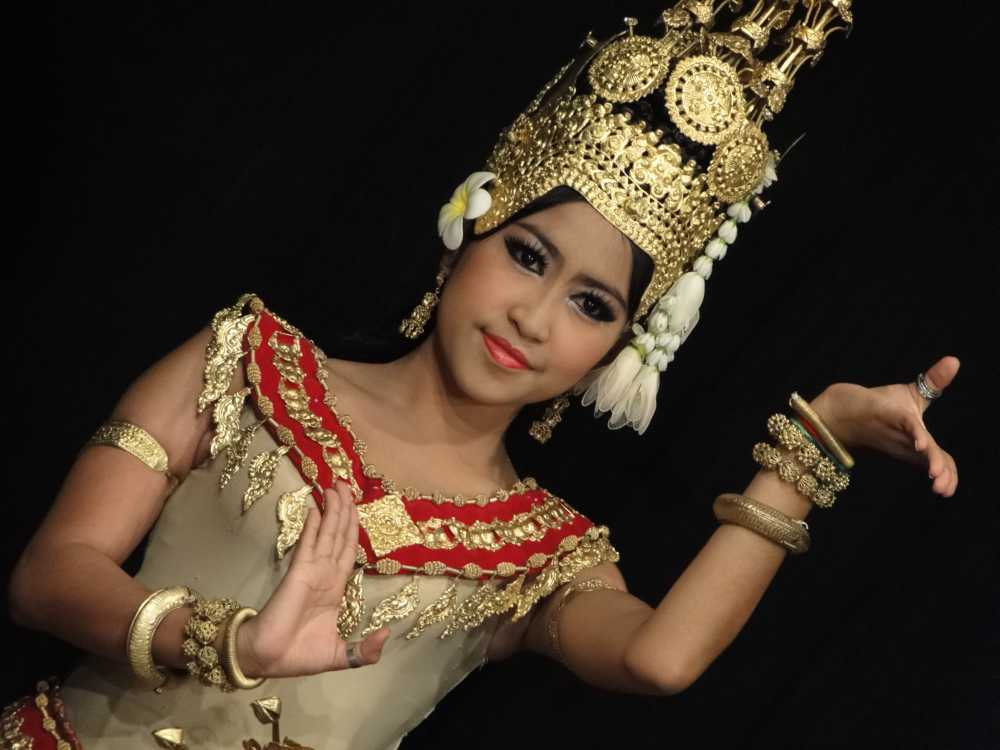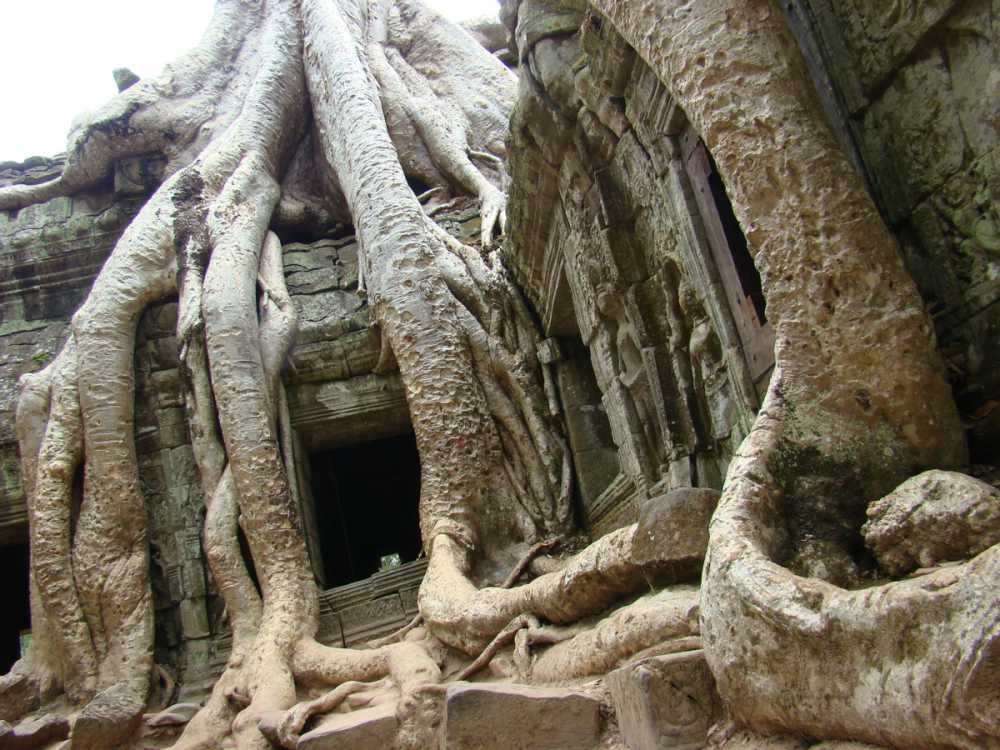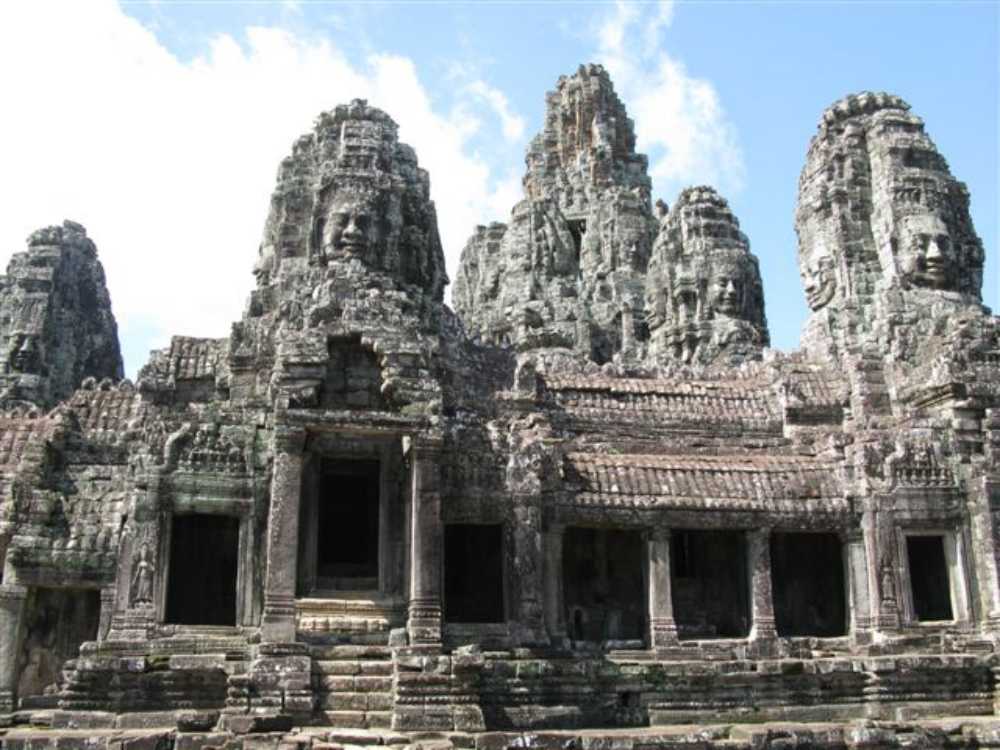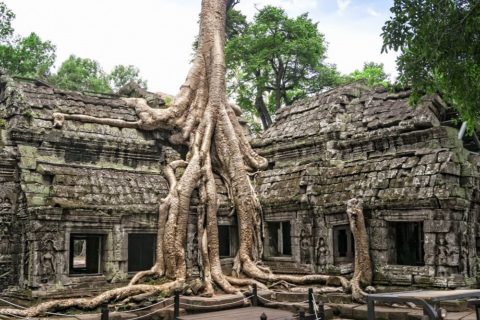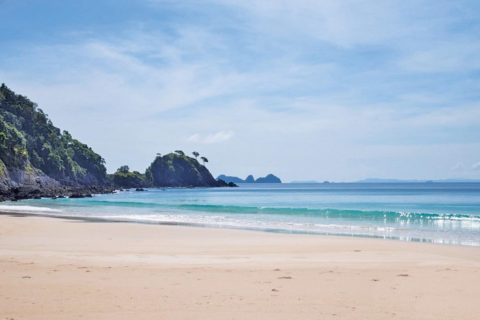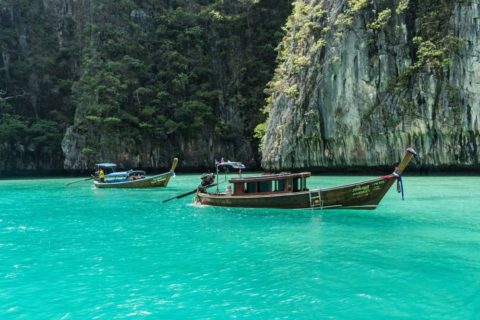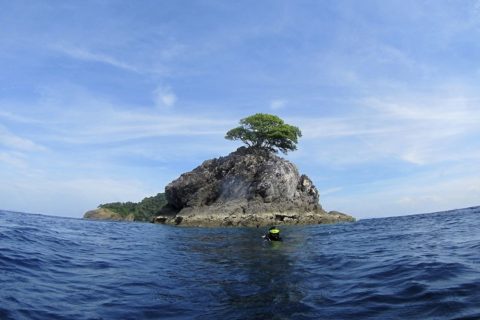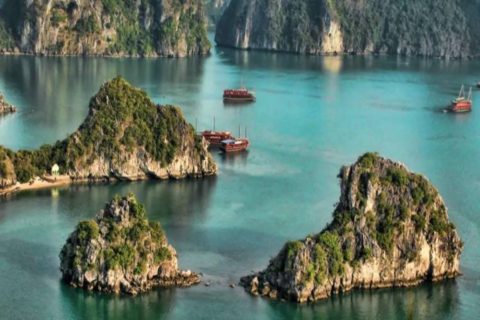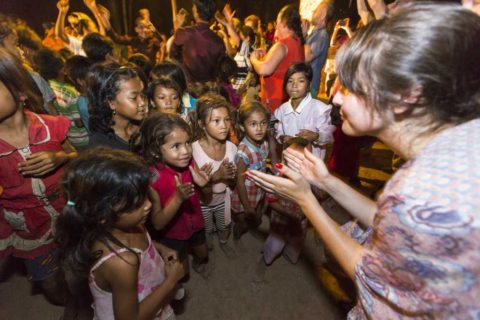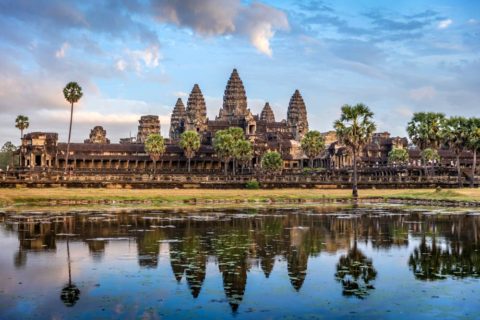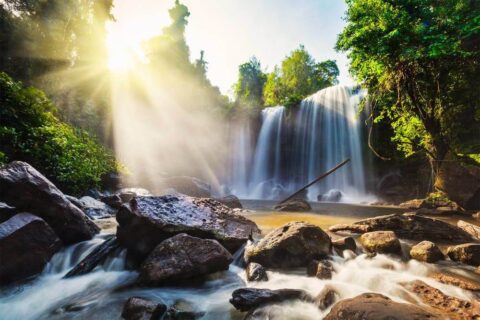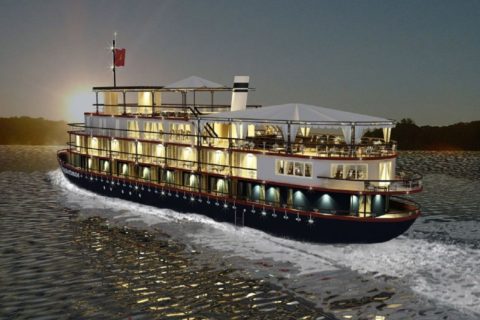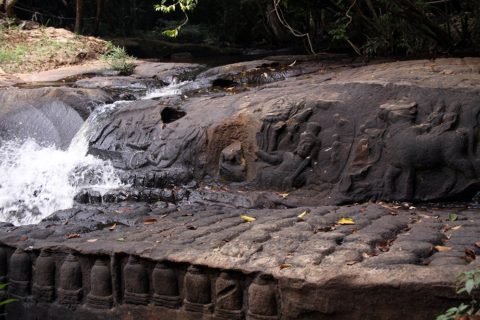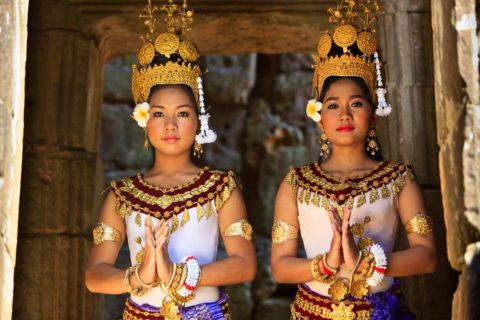This guided tour will introduce you to the cultural highlights and most famous temples in the Ancient city of Angkor. From must see attractions like the Angkor Wat to off the beaten path discoveries further afield, you’ll get the full experience of this stunning ancient marvel.
Join us a tour of the highlights of Angkor and discover the magnificence of this ancient kingdom.
| PRICE: | From |
| DURATION: | 6 Days / 5 Nights |
| TOUR STYLE: | Cultural & Heritage |
| DESTINATIONS: | Phnom Penh, Siem Reap |
| TOUR CODE: | |
| DEPARTURES: | Daily (Private Departures) |
| STARTS: | In Phnom Penh |
| ENDS: | In Siem Reap |
At a glance
Highlights
- Cyclo tour of Phnom Penh
- Phnom Penh city sightseeing
- Silver Pagoda at the Royal Palace, Phnom Penh
- Temples visit at Siem Reap
- Explore Cambodia Landmine Museum
Itinerary in Brief
DAY 1: Arrrival Phnom Penh
DAY 2: Phnom Penh
DAY 3: Phnom Penh – Siem Reap
DAY 4: Siem Reap
DAY 5: Siem Reap
DAY 6: Siem Reap – Departure
TOUR DETAILS
Arrival in Phnom Penh: they will take the flight by TBA [own arrangement]
Private Transfer: you will be met by your guide and driver transfer from airport to hotel for check-in
Afternoon Sunset Cyclo Tour: We take to the streets of Phnom Penh with a cyclo tour of the city riverfront area in late afternoon, as the sun begins to set and the city comes alive with locals exercising to popular music, families out for a stroll or taking advantage of the food vendors to eat their snacks on the lawns in front of the King’s residence. We begin at the corner of Koh Pich Island where the recent addition of a funfair has brought the area alive with parents and children as we then head past the Hotel Cambodiana and Chaktomuk Theatre and take a break on the riverbank, looking west towards the glittering Royal Palace with the last rays of the sun lighting up the sky behind it. We continue along bustling Sisowath Quay, in front of myriad restaurants, bars and cafes and venture into the side streets before ending our journey with the exercising work-out groups and colourful fountain lights at the Cambodia-Vietnam Friendship Park.



Full Day Phnom Penh City Tour: Start your tour of Cambodia’s capital at the stunning Royal Palace complex, home to the Cambodian royal family and a symbol of the nation. Here you will see beautiful gardens landscaped with tropical plants and the Throne Hall where the royal receptions are held and the Cambodian king’s coronation took place. Continue to the Silver Pagoda, named after the 5000 silver tiles covering the floor, each weighing 1kg. Inside are some of the country’s most cherished treasures, including a life-size gold Buddha studded with 9584 diamonds, the largest weighing 25 carats. Leave the Royal Palace and continue to the nearby National Museum, home to the world’s finest collection of sculpture from the Angkor period. The exquisite building was completed between 1917 and 1920 and features a lush courtyard garden surrounded by collections from the pre-Angkor, Angkor and post-Angkor periods. You will then have the option to learn of the Khmer Rouge’s horrific crimes at Tuol Sleng, a former high school that the Khmer Rouge turned into a centre for interrogation, torture and death. 17,000 people passed through the gates of this prison and only seven lived to tell the tale. The Khmer Rouge were meticulous in their record keeping, photographing all the prisoners and many of these haunting black and white images are on display in the cells. Tuol Sleng is a profoundly moving experience and not everyone will want to visit. However, it is key to understanding the hell into which Cambodia descended and how far it has come in the years since. Finish your tour at the Killing Fields of Choeung Ek. An old Chinese cemetery, Choeung Ek was turned into an extermination camp for political prisoners. The remains of 8985 people were exhumed from mass graves and are kept in a memorial stupa here. Despite the horrors of the past, it is a peaceful place to go and a tranquil spot to reflect on the tragic events that engulfed Cambodia and its people.
Evening CLA On Stage Shows at National Museum: It is a series of 3 rotating shows at the National Museum of Phnom Penh, featuring a wide range of traditional performing arts. With more than Apsara dances, we offer you the chance to discover the diversity of Cambodian culture and traditional arts through original and enjoyable pieces, set in the splendid gardens of the National Museum. In addition to giving a unique opportunity to experience Cambodian culture and arts, CLA (Cambodian Living Art) aims at creating regular, well-paid work for emerging arts professionals in the arts sector. Time: 7-8pm, doors open at 6.30pm. Days: Monday, Wednesday, Friday, and Saturday.



Private transfer: you will met by your guide and driver transfer from hotel to airport for flight to Siem Reap
Domestic flight: you will take the flight Phom Penh to Siem Reap by K6 – TBA [Issued by Hanuman]
Private transfer: you will me by your guide and driver transfer from airport to hotel
Sunset quadbike tour with cocktail: For those that have never experienced it, all-terrain biking is a lot of fun and all trips include a short introductory lesson to bring riders up to speed. Rides around Siem Reap include a sunset option through the ricefields, whilst others include some quiet pagodas, an ancient temple and a series of backroads through the pretty countryside and rural villages around Siem Reap. The late afternoon sunset ride will take you into the ‘real’ Cambodia and will include a look across the ricefields to Phnom Krom as the sun sets on this beautiful rural scene. The route is 12kms in length. Helmets must be worn and ‘minders’ will be with you at all times to ensure your safety.



Early Morning Visit Ta Prohm, Walking Tour from Ta Nei to Preah Khan: We rise early morning to travel to Ta Prohm temple. Ta Prohm has been abandoned to the elements, a reminder that while empires rise and fall, the riotous power of nature marches on, oblivious to the dramas of human history. Left as it was ‘discovered’ by French explorer Henri Mouhot in 1860, the tentacle-like tree roots here are slowly strangling the surviving stones, man first conquering nature to create, nature later conquering man to destroy. We started our walk tour to visit a little temple of Ta Nei to one of Angkor’s most impressive sights and offers a real insight into the size and scale of Angkor. We begin our walk at Ta Nei, a beautiful and very atmospheric temple set in the forest. After Ta Nei, we continue our tour to the mighty temple of Preah Khan or ‘Sacred Sword’, built by King Jayavarman VII in the late 12th century. Sister temple to Ta Prohm, the cruciform corridors here are impressive and there are some wonderful carvings adorning the walls, including the spectacular hall of dancers. Look out for the curious two-storey structure that is almost Grecian in inspiration. This is one of the few temples originally dedicated to Buddhism and Hinduism. The original eastern entrance was for Mahayana Buddhists, while the other cardinal points represented the Hindu trinity of Shiva, Vishnu and Brahma.
Lunch at Sala Kdei Khmer House: Enjoy a traditional Khmer lunch menu at Sala Kdei, an intimate location to eat and rest in the middle of the day while exploring the temples. Breakfast, sunset cocktails or a Khmer cooking class are also available at this gorgeous traditional wooden home on the banks of the Royal bathing pool at Sra Srang.
Afternoon Angkor Thom, Bayon: In the afternoon, we visit the immense walled city of Angkor Thom that was the masterpiece of King Jayavarman VII. Following the occupation of Angkor by the Chams from 1177 to 1181, the new king decided to build an impregnable fortress at the heart of his empire. The scale is simply staggering and we are immediately overwhelmed by the audacity of Jayavarman on arrival at the city’s gates. The causeway is lined by an intricate bridge depicting the Churning of the Ocean of Milk from Hindu mythology in which the devas (gods) and asuras (devils) play tug of war with a naga (seven-headed serpent) to obtain the elixir of immortality. We begin our visit at the Terrace of the Leper King. This intricately carved platform was the royal crematorium and the statue that was originally thought to be the leper king is now believed to be Yama, the god of death. We continue along the Terrace of Elephants, originally used as a viewing gallery for the king to preside over parades, performances and traditional sports. The Royal Palace complex, which was once home to the God-kings of Angkor; Preah Palilay, a Buddhist temple overshadowed by huge capok trees; Phimean Akas, a petite pyramid temple; At the southern end lies the Baphuon, once of the most beautiful temples at Angkor, dating from the reign of Uditayavarman in the 11th century. It has undergone a massive renovation by the French and is now once again open for viewing. Our climax is the enigmatic and enchanting temple of the Bayon. At the exact centre of Angkor Thom, this is an eccentric expression of the creative genius and inflated ego of Cambodia’s most celebrated king. Its 54 towers are each topped off with the four faces of Avalokiteshvara (Buddha of Compassion), which bear more than a passing resemblance to the king himself. These colossal Our climax is the enigmatic and enchanting temple of the Bayon. At the exact centre of Angkor Thom, this is an eccentric expression of the creative genius and inflated ego of Cambodia’s most celebrated king. Its 54 towers are each topped off with the four faces of Avalokiteshvara (Buddha of Compassion), which bear more than a passing resemblance to the king himself. These colossal heads stare down from every side, exuding power and control with a hint of compassion, just the mix required to keep a hold on such a vast empire. Before clambering upwards, we unravel the mysteries of the bas-reliefs, with their intricate scenes of ancient battles against the Chams and their snapshot of daily life during the Angkor period.
Evening Visit Phare Modern Circus Shows: In the evening we head out to the home of the innovative circus performers from Phare Ponleu Selpak. Their regular modern circus show under the Big Top is proving very popular in Siem Reap and in each show they display a variety of disciplines including acrobatics, choreography, juggling, clowning, live music and much more. A pre-show dinner can also be arranged.



Full day Angkor Wat sunrise, Banteay Srei, Banteay Samre, Landmine museum,: Rising at the crack of dawn, we journey out to the Mother of all temples, Angkor Wat. Believed to be the world’s largest religious building, this temple is the perfect fusion of symbolism and symmetry and a source of pride and strength to all Khmers. Built in the 12th century by King Suryavarman II, this is most famous temple at Angkor. We stay at Angkor Wat to enjoy a picnic breakfast. As the crowds return to their hotels, we venture into Angkor Wat to enjoy its magnificence in peace and quiet. We begin by unraveling the mysteries of the bas-reliefs that tell of tales from Hindu mythology and of the glories of the Khmer empire. Stretching for almost one kilometre, these intricate carvings are a candidate for the world’s longest unbroken piece of art. Following in the footsteps of the devout and the destructive before us, we then continue to the upper levels of the inner sanctuary. The final steps to the upper terrace of Angkor are the steepest of all, as pilgrims of old were to stoop on their pilgrimage to encounter the Gods. Finally the pinnacle, the sacred heart of Angkor Wat, a blend of spirituality and symmetry so perfect that few moments will measure up.
We head to Banteay Srei, Angkor’s ultimate art gallery. This petite pink temple is the jewel in the crown of Angkor-era sculpture. The elaborate carvings here are the finest found in Cambodia and the name translates as ‘Fortress of the Women’, thanks to the intricate detail here, considered too fine for the hands of a man. Originally believed to date from the latter part of the Angkor period, inscriptions at the site suggest it was built by a Brahman in 967. However, some architectural historians have suggested that the inscriptions may date from an earlier structure on this site and the temple is in fact later, marking a high-water mark in Khmer sculpture. Later we visit the 12th century temple of Banteay Samre. Built by King Suryavarman II, the genius behind Angkor Wat, this temple has been extensively restored. The temple is unique in that over-quarrying of sandstone led to the use of laterite for the roofed corridors. The pediments above the inner doors here include some of the most accomplished carving from the Angkor period.
On the way back to Siem Reap, we visit the Cambodia Landmine Museum to learn more about the scourge of landmines and the shadow they cast over rural communities in Cambodia with a visit to this flagship museum promoting mine awareness and education. The Land Mine Museum displays a large collection of weapons of war, including guns, rifles, rocket launchers, mortars, bombs and landmines. The site includes a mocked up minefield and visitors can attempt to locate the deactivated mines. The museum is a rich resource of information about landmines and UXO with many educational displays detailing how certain mines are used and in what situations. There is also a DVD available telling the story of landmines and UXO in Cambodia and the disastrous impact they have had on the population. Not only a weapon of war, they are a weapon against peace. The Landmine Museum promotes land mine accident prevention awareness and public education; and provides educational facilities, programming and rehabilitation facilities for survivors of land mine injuries. It also provides education and support for dozens of at-risk, land mine-affected children who have suffered overwhelming hardships. The Cambodia Landmine Museum was created so that it might serve as a place of healing for bodies, hearts and minds.



Morning tour Floating Villages of the Tonle Sap: Taking a break from the temples, we travel out to the mighty Tonle Sap Lake to visit the floating village of Chong Kneas. Nestled under the hill of Phnom Krom, this floating community moves location with the waters of the lake. During the wet season when the lake swells to five times its size, the village is near Phnom Krom, but during the dry season, it moves as much as 4km from the hill. Everything floats on water in this living fishing community. There are floating schools, floating shops, floating petrol stations, even floating karaoke bars. Many of the houses are floating fish farms with large pens of fish underneath. We continue our boat journey across the Great lake to the village of Kompong Pluk. Cruising down a narrow waterway, we enter this medieval floating village, where the houses stand atop stilts as much as seven metres above the water. Everything lives on the water, pigs, dogs, crocodiles and people, all jockeying for space in this incredible floating town. We explore the local wat here, before enjoying the flooded forest and returning across the Tonle Sap Lake to Chong Kneas and the holy mountain of Phnom Krom. We climb Phnom Krom for a glorious sunset over the Tonle Sap before heading back to Siem Reap by road.
Lunch at Sala Roluos Khmer House: Sala Roluos is a beautiful traditional wooden house close to the 9th century capital of Hariharalaya and the rustic Cambodian town of Roluos. In a serene setting amid the rural atmosphere of its regal surroundings, Sala Roluos offers exclusive lunch and dinner encounters, which can be easily combined with visits to the Roluos temple monuments as well as the nearby stilted village of Kompong Pluk and its flooded forest. Our traditional Khmer lunch menu made using locally-sourced organic ingredients where available. Lunch is served between midday and 2pm.
Departure flight: your guide and driver will escort to Siem Reap airport for departure home, flight is TBA [own arrangement]
What's Included
- Private tours and transfers with air-conditioned vehicles as specified in our itinerary
- 2 bottles of water & 2 refreshing towels per passenger per day
- Lodging with breakfast as specified in the itinerary
- Luggage handling fees at airports
- Entrance fees or zone fees
- English speaking guide(other languages guide can be provide with additional charges)
What's Not Included
- Visa to Cambodia (note that pre-arranged visa is required for tourists)
- All entrance fees or zone fees
- Domestic Airfares (always quoted and mentioned separately from tour package price)
- International air fares
- Meals or any other item not described in the itinerary
- Peak season surcharges & Compulsory dinners during Xmas & New Year’s
- Early check-in, late check-out. Normal check out time from hotels in Cambodia is 11am or 12 o’clock noon
- Drinks during meals, hotel extras and expenses of personal nature
- Camera & video fees. Some of the sites visited may ask small fees for photographing and video recording.
Tips & gratuities
Meet Jan our Cambodia Expert
Contact Jan to book this trip or to customise the trip in any way you like. We’re here to help.
WHAT OUR CLIENTS ARE SAYING
About This Tour
DON’T FORGET TO CHECK OUT
Related Tours
CAMBODIA NATURE DISCOVERY 14D/13N
This guided tour will focus on unique natural wonders of Cambodia, from pristine jungle trails to endless lowlands with rare and protected mammals and birds, as well as introduce you to the...
KOH RUSSEY ALILA EXTENSION 4D/3NT
This guided tour will introduce you to the cultural highlights and most famous temples in the Ancient city of Angkor as well as a special focus on bird watching in the surroundings of this...
KOH RONG ROYAL SANDS EXTENSION 4D/3NT
This guided tour will introduce you to the cultural highlights and most famous temples in the Ancient city of Angkor as well as a special focus on bird watching in the surroundings of this...
SONG SAA PRIVATE ISLAND EXTENSION 4D/3NT
This guided tour will introduce you to the cultural highlights and most famous temples in the Ancient city of Angkor as well as a special focus on bird watching in the surroundings of this...
SIX SENSES KRABEY ISLAND EXTENSION 4D/3NT
This guided tour will introduce you to the cultural highlights and most famous temples in the Ancient city of Angkor as well as a special focus on bird watching in the surroundings of this...
CAMBODIA LOCAL LIFESTYLE
This guided tour will introduce you to the cultural highlights and most famous temples in the Ancient city of Angkor as well as a special focus on bird watching in the surroundings of this...
KHMER KINGDOMS ACTIVE 12D
This guided tour will introduce you to the cultural highlights and most famous temples in the Ancient city of Angkor as well as a special focus on bird watching in the surroundings of this...
SIEM REAP, PHNOM PENH & 4 RIVERS 12D/11NT
This guided tour will introduce you to the cultural highlights and most famous temples in the Ancient city of Angkor as well as a special focus on bird watching in the surroundings of this...
CAMBODIA EXPLORER 16D/15NT
Grand journey through Cambodia covering the most scenic temples - on and off the beaten trails - combined with wildlife watching, conservation project visits, jungle walks, mingling with local...
MEKONG “JAHAN/ JAYAVARMAN CRUISE” 8D/7NT
This guided tour will introduce you to the cultural highlights and most famous temples in the Ancient city of Angkor as well as a special focus on bird watching in the surroundings of this...
THE HIDDEN TREASURES OF CAMBODIA 12D/11NT
This guided tour will introduce you to the cultural highlights and most famous temples in the Ancient city of Angkor as well as a special focus on bird watching in the surroundings of this...
BATTAMBANG EXTENSION 3D/2NT
This guided tour will introduce you to the cultural highlights and most famous temples in the Ancient city of Angkor as well as a special focus on bird watching in the surroundings of this...
